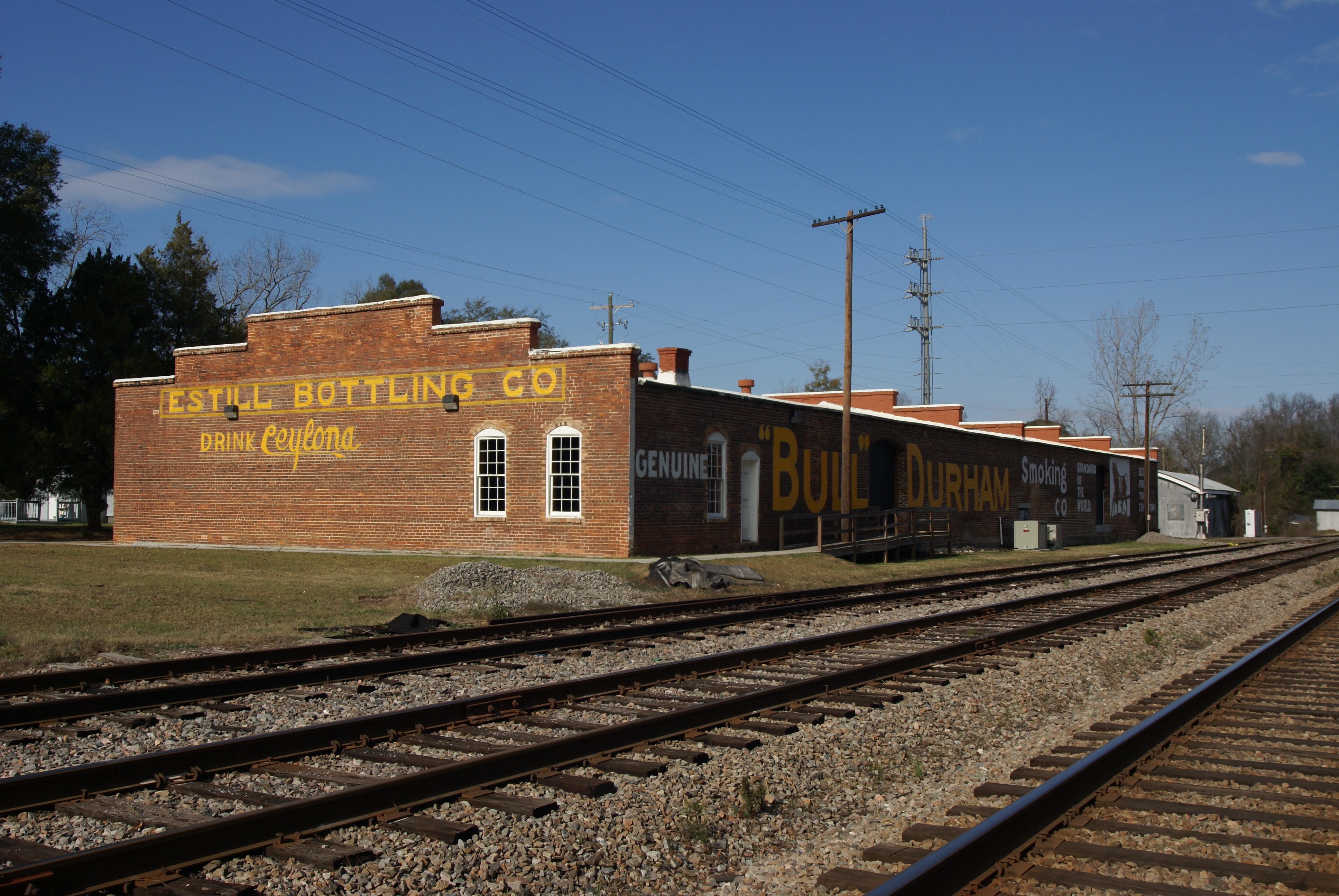 The Bull Durham Center located at 372 N Martin Luther King Jr. Hwy (formally 33 Railroad Avenue West), was constructed circa 1910 as a cotton warehouse.
The Bull Durham Center located at 372 N Martin Luther King Jr. Hwy (formally 33 Railroad Avenue West), was constructed circa 1910 as a cotton warehouse. It has become better known for the Bull Durham tobacco advertisement painted on its brick exterior. In 1994, the Town acquired the old cotton warehouse from Andrew Harper. The warehouse sat dormant for a number of years. In August 2009, the Town officially re-dedicated the old Estill Cotton Warehouse as the Bull Durham Center.
The Bull Durham Center is available for training purposes by a variety of organizations, as a conference center, and has an exhibit hall and reception hall for wedding receptions, class reunions, church socials, etc. Alcohol service is allowed, under certain restrictions, but the Bull Durham Center is a no smoking facility.
The Live Oak Exhibition Hall, is more appropriate for meetings, lectures, exhibits and presentations. There is also the Live Oak Lobby available for smaller, more intimate training sessions and meetings.
The Palmetto Reception Hall is more appropriate for social events such as wedding receptions, church socials, balls, and other affairs where food and drinks will be consumed. The Palmetto Reception Hall has a large galley and wood-tiled floor suitable for dancing.
Each hall can be configured with tables and chairs appropriate to the event. A podium and stage are also available by request.
The facility also offers paved, lighted parking lot on Nixville Road and additional parking on the grassy knoll adjacent to the building. The Bull Durham Center is handicap accessible.
Rental rates begin at $400 for four hours, and prices can be negotiated for an entire day.
Interested parties can rent either the Live Oak Exhibit Hall or the Palmetto Reception Hall, or both if needed. Anyone who is interested in renting the Center is encouraged to call Estill Town Hall to schedule an appointment for touring the Center and executing a rental agreement.